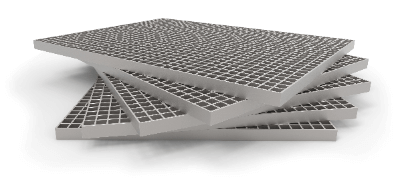What Is a Bonderized Sheet?
Bonderized Sheet is a steel material officially called electrogalvanized steel sheet.
Both sides of a thin steel sheet are electroplated with zinc, and surface treatment (phosphate film treatment) is applied by electrochemical corrosion protection using manganese oxide and iron phosphate. The latter half of the bonded steel sheet has good adhesion of the coating film and excellent corrosion resistance.
The name “Bonderized Sheet” was used when it was first manufactured and sold by Nippon Steel Corporation (now Nippon Steel Corporation). It is a type of steel material designated as SECC “electrogalvanized steel sheet” by JIS.
The name “Bonderized Sheet” is used only by metalworking companies and the construction industry that use Bonderized Sheet, and not by the steel industry that supplies the material.
Uses of Bonderized Sheets
Bonderized Sheet is mainly used as a building material for hardware, furniture, and lighting fixtures used indoors. A familiar example is the back panel of a desktop computer, which is made of Bonderized Sheet. Painted ones are used for interior walls and ceilings of buildings and stations, etc. Covers for ATMs and other mechanical equipment, and the exteriors of elevators and escalators are other applications.
For outdoor use, it is sometimes used as the body of a truck, but it is used as a material with a base coat of paint, which is then further coated. There are seven standard thicknesses of Bonderized Sheet: 0.6, 0.8, 1.0, 1.2, 1.6, 2.3, and 3.2 mm. The numbers are in the middle due to the influence of the conventional inch notation.
Properties of Bonderized Sheet
As mentioned above, Bonderized Sheet is a steel material officially called electrogalvanized steel sheet. There are several different methods of applying galvanization to steel, but Bonderized Sheet uses electroplating to form a uniform zinc coating on the surface of the steel sheet.
The most important effect of galvanizing is to give the steel sheet a rust-preventive feature. Depending on the environment in which they are used, iron-based products can develop rust, which not only deteriorates their appearance but also greatly reduces their strength. Galvanizing steel provides a rust-preventive effect by covering the surface of the steel with zinc.
The anti-corrosion mechanism of zinc plating is such that if a small scratch occurs on the product, zinc will dissolve into the scratch and cover it before the steel rusts. This effect is called, for example, sacrificial corrosion protection, whereby the plating material corrodes itself before the base metal does, thereby protecting the base metal.
Another excellent property of electrogalvanization is that it not only covers the surface thinly, but also evenly over the entire surface. This is one of the reasons why Bonderized Sheet is an easy-to-use material, not only because of its beautiful appearance, but also because of the ease with which paint can be applied.
Features of Bonderized Sheet
1. Beautiful Appearance
With Bonderized Sheet, a uniform and smooth surface can be obtained, which is only possible with electrogalvanization. Bonderized Sheet is also attractive because it provides a different atmosphere from that of painted surfaces.
2. Excellent Processability
Bonderized Sheet is suitable for bending, pressing, and drawing. Although it is not suitable for structural members due to its inferior strength, it is suitable for decorative and panel parts due to its excellent workability.
3. Weldable
Bonderized Sheet can be welded. Generally, plated materials cannot be welded in most cases because the plating film does not melt easily. Bonderized Sheet can be joined by arc welding such as tig welding because the plating film is thin.
4. Good Compatibility with Coating
The zinc phosphate coating applied to Bonderized Sheet is suitable as a base for painting, which improves the adhesion of the paint. In addition, even if the coating is damaged, the sacrificial corrosion protection of the zinc coating prevents rust from forming.
Other Information on Bonderized Sheet
Difference between Bonderized Sheet and SGCC
SGCC is hot-dip galvanized steel sheet, which differs from electrically plated Bonderized Sheet (SECC) in that a zinc coating is applied to the surface of the steel sheet by immersing the sheet in molten zinc.
Both Bonderized Sheet and SGCC are plated with the same zinc, but there is a difference in performance between the two due to the different plating methods. Electroplating produces a uniform, thin film, while hot dip galvanizing produces a relatively non-uniform, thick zinc film.
Since the corrosion resistance of galvanized steel depends on the thickness of the plating film, SGCC with hot-dip galvanization exhibits higher corrosion resistance than Bonderized Sheet. Because of these differences, Bonderized Sheet is generally used in situations where appearance is important, while SGCC is generally selected in situations where corrosion resistance is important.
 A machine hatch is a specialized door for bringing large pieces of equipment into a building.
A machine hatch is a specialized door for bringing large pieces of equipment into a building.